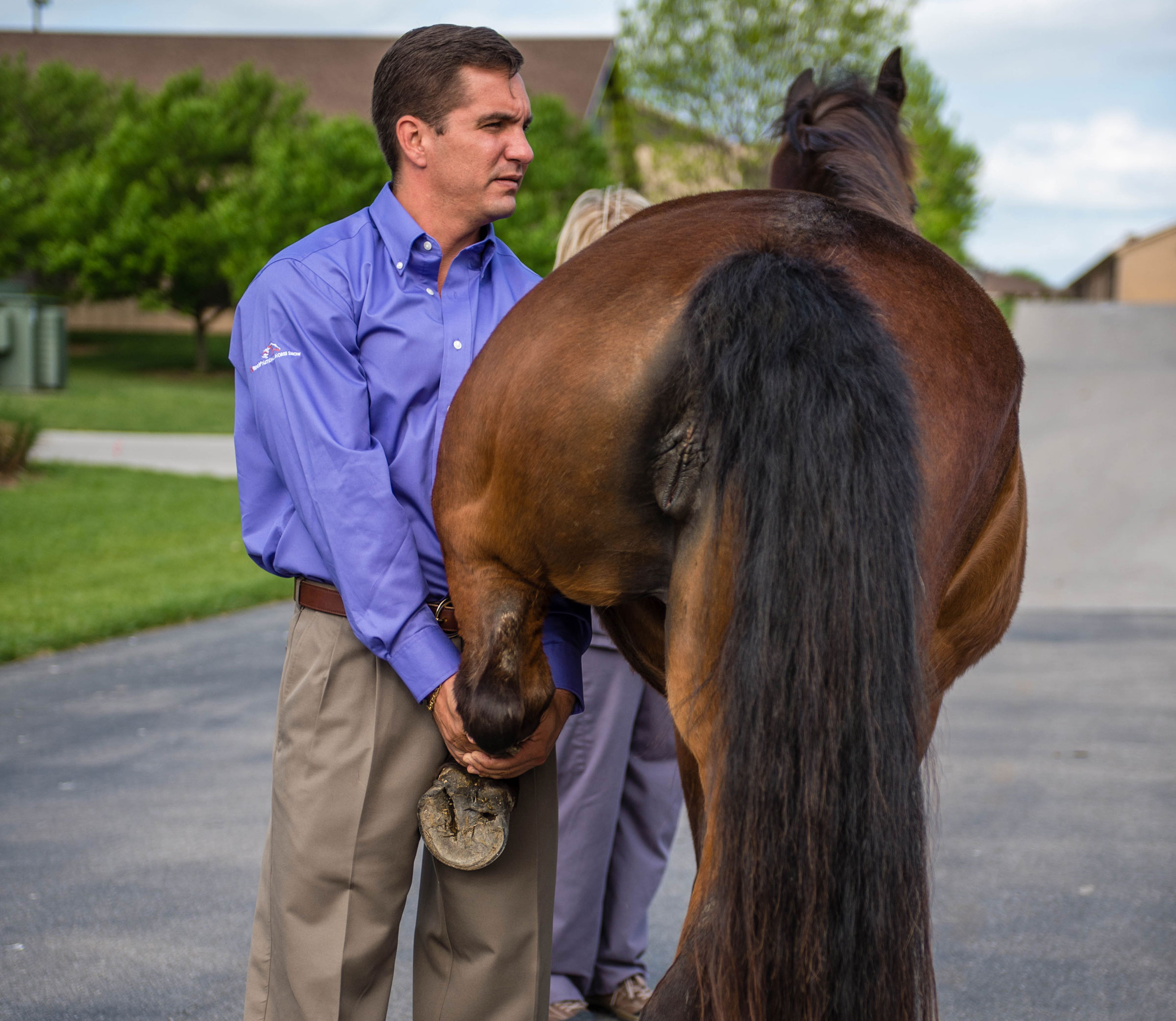
Amy Dragoo
Working up lameness can be difficult with a fractious horse, especially when hind-limb diagnostic nerve or joint blocks are involved. There are times when, for safety reasons for veterinarians and handlers, it is necessary to sedate the horse. Often, there is concern that sedating a horse might mask a horse’s pain response and thereby confound interpretation of the results of diagnostic nerve or joint blocks.
A group of Brazilian veterinarians examined the effects of using xylazine alone (0.3 mg/kg) or in conjunction with butorphanol (0.01 mg/kg) on induced lameness compared to a control group of horses that did not receive sedation [Beck, Júnior A.A.; De La Côrte, F.D.; Brass, K.E.; Dau, S.L.; Gabriele, B.S.; Camillo, MdA. Effect of xylazine and butorphanol on experimental hind-limb lameness in horses, Journal of Equine Veterinary Science (2018), doi: https://doi.org/10.1016/j. jevs.2018.11.007].
Sixteen adult horses were used in the study. Metal clamps placed around the hoof wall with small screws induced reversible lameness. The screws were tightened just prior to sedation until the horses became Grade 3 or 4 on the AAEP lameness scale (0-5). All the horses received the different treatments—xylazine alone, xylazine plus butorphanol or no sedation—in a crossover design with a 48-hour washout period.
The study concluded: “Xylazine alone or associated with butorphanol at the recommended doses may be used as chemical restraint to turn an anesthetic block of the hind limbs into a safer procedure without masking lameness intensity for at least 40 minutes post administration.”
More research is needed to evaluate how detomidine and romifidine might interact with butorphanol during hindlimb lameness evaluations.
This study also did not examine sedative effects on joint anesthesia or neurologic evaluation.








